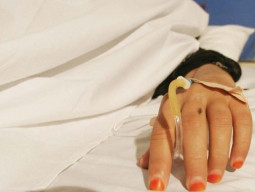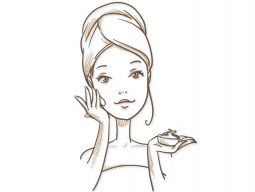
Instead of visiting hospitals, a large number of people go to Hijama centres. The treatment is based on the principal of traditional Chinese medicine. It is a holistic system which uses preventive medicine, diet and exercise to maintain a healthy balance of mind and body.
As many as 50 centres have emerged around the city to provide treatment against various ailments. According to experts who offer the treatment, most patients who opt for Hijama complain of severe headache, sciatica, depression, weight gain or migraines.
They claim the majority of patients often want on-the-spot treatment and find some form of relief after being treated at the centre. However, certain days work better than others.
“Patients should visit us on 17th, 19th and 21st of any Islamic calendar month,” Nemat Zaman, a therapist who offers this treatment, tells The Express Tribune. “The best timings for therapy are between 10am and 1pm, but patients can be cured on other days or at any given time.”
He says there are different types of treatments for cancer patients, adding honeybee and leech cupping are the best therapies for positive results. According to Zaman, people suffering from joint pains, lethargy, and others problems should visit their centre.
“A session usually takes about three hours,” he explains. “Each cup costs about Rs300. Patients must visit the centre on an empty stomach.”
He says the therapy is the best type of treatment for various diseases in Arab countries, adding people like the Egyptians prefer Hijama over going to a hospital.
Zaman reveals both men and women patients visit his centre. However, there is a specific day in the week for women when a female therapist is available for them.
According to Zaman, he has been running the centre for the last three years and obtained a certificate from the National Research Council (NRC) Islamabad. In an effort to be completely up to date on his craft, Zaman has been pursuing four online courses from Eqypt, Algeria, Iraq and the UAE. “The ancient method is practiced in Egypt for around 3,000 years whereas the therapy itself was around 6,000 years old,” he says.
Responding to a question, Zaman reveals the sterilisation of equipment is taken very seriously. “Unsterilised instruments can harm patients. This is why instruments are trashed the moment they are used on one patient.” He adds nobody apart from a trained Hijama therapist can perform this treatment.
Adil Bashir, a patient who visited the centre with complaints of a severe headache, recalls that his brother suffered from a similar condition. When his brother’s treatment proved successful, Adil fought off his initial hesitation and visited the Hijama centre.
“I was reluctant earlier, but I would now like to try it keeping my brother’s experience in mind,” Bashir says. He also advised those suffering from severe headaches to give it a try.
Former Lady Reading Hospital medical superintendent Dr Raheem Jan Afridi says he read about Hijama in various books.
“However, modern science has not adopted this form of treatment as yet,” he explains. “Hijama should be studied for its tremendous healing powers.”
Published in The Express Tribune, August 30th, 2015.



















1713973361-4/Destryed-Gaza-Historical-Sites-(1)1713973361-4-270x192.webp)










1713853507-0/MalalaHilary-(2)1713853507-0-270x192.webp)







COMMENTS (2)
Comments are moderated and generally will be posted if they are on-topic and not abusive.
For more information, please see our Comments FAQ